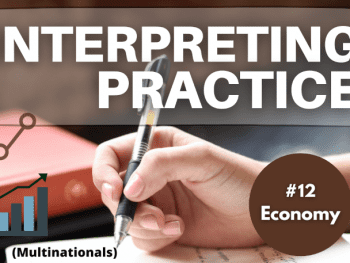Interpreting speech to practice your note-taking skills. WARNING: This speech starts straight away!
Topic(s): Health, Medicine
Terms: allure, craving, reward system, dopamine, blood sugar levels, spikes, sugary treats, whole foods, natural sweeteners
Sources:
Also check these books to learn and practice interpreting.
Good For Practicing:
- Consecutive interpreting
- Note-taking Practice
- Simultaneous Interpreting
- Conference Interpreting
Also available on Speechpool.
If you’ve found this post helpful or think it could be useful to a friend who perhaps is – or is planning to become – an interpreter, please kindly consider buying me a coffee by using the button below:
I put all my heart and soul into the content I produce in order to help my fellow linguists set foot in the industry. Most of what I do is available to everyone for free.
Donating is 100% optional, but greatly appreciated. A short espresso will do! ☕
Script*:
*Please check the script only after you’ve done the note-taking exercise, otherwise that’s cheating! 🙂
Sugar, that delightful ingredient found in many of our favorite treats, holds an irresistible allure for many. Have you ever wondered why you can’t resist that second slice of cake or that extra scoop of ice cream? The truth is, sugar can trigger addictive tendencies in our brains, leaving us craving more. Let’s explore why this happens.
Sugar has a powerful impact on our brain’s reward system, primarily through the release of dopamine, a neurotransmitter associated with pleasure and reward. When we consume sugar, it triggers the brain to release dopamine, creating a sense of pleasure and satisfaction. This natural response is similar to what happens when we engage in activities like exercising, bonding with loved ones, or even taking drugs.
While the initial rush of pleasure is enticing, sugar can also cause a roller coaster effect on our blood sugar levels. When we consume sugary foods, our blood sugar spikes, leading to a surge of energy. However, this spike is usually followed by a rapid drop, leaving us feeling tired, irritable, and craving more sugar to regain that initial high. This cycle can become addictive as we seek to recreate the pleasurable sensations by consuming more sugar.
Sugar can also be emotionally comforting, often associated with positive memories and experiences from our past. From childhood celebrations to bonding over desserts with friends, these emotional associations can create a powerful connection between sugar and happiness. When we feel down or stressed, turning to sugary treats can provide a temporary mood boost, reinforcing the emotional attachment we have to sugar.
Understanding the addictive nature of sugar is the first step towards managing our consumption. Here are a few strategies to help break the cycle:
1. Awareness: Recognize the signs of sugar addiction and the impact it may have on your overall well-being.
2. Moderation: Enjoy sugary treats in moderation, focusing on a balanced diet rich in whole foods.
3. Healthy alternatives: Satisfy your sweet tooth with natural sweeteners like fruits or opt for healthier dessert options.
4. Emotional support: Seek support from friends, family, or professionals to address emotional eating habits.
While sugar can be addictive due to its impact on our brain’s reward system, understanding this phenomenon empowers us to make healthier choices. By practicing moderation, finding healthier alternatives, and seeking emotional support, we can break free from the sweet temptation and lead a balanced, fulfilling lifestyle.














 Interpreting Training Exercise | Interpreting For Obama
Interpreting Training Exercise | Interpreting For Obama